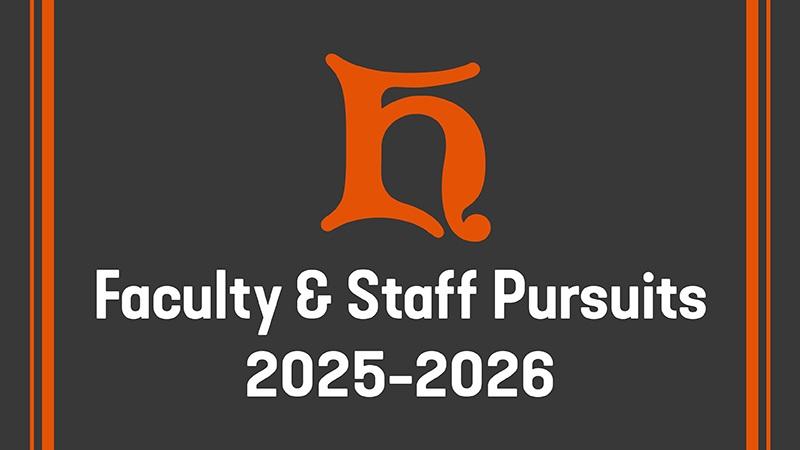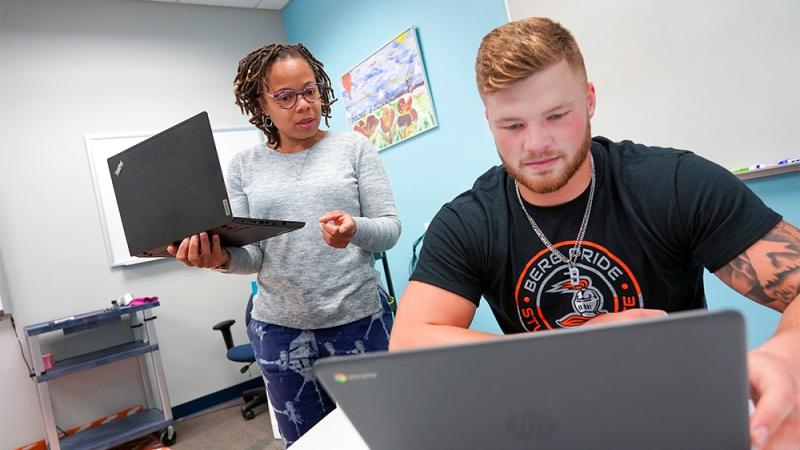NCWQR key partner in H2Ohio wetland monitoring program
COLUMBUS, Ohio – Heidelberg’s National Center for Water Quality Research will play a key role in the H2Ohio Initiative, a comprehensive, data-driven approach to improving Ohio’s water quality.
H2Ohio has enlisted the Lake Erie and Aquatic Research Network (LEARN) to partner with ODNR on the H2Ohio Initiative’s wetland monitoring plan. The group will assess the effectiveness and future role of implemented and planned wetland restoration projects under the H2Ohio Initiative.
Researchers from Heidelberg, along with BGSU, Kent State, Ohio State, the University of Toledo and Wright State will participate in sampling across multiple wetland types either currently being constructed or planned for the near future. ODNR and state scientists recognize that each wetland type will require different sampling approaches and will likely vary in its capacity to reduce nutrient runoff. This comprehensive monitoring plan is designed to identify and capture these differences.
This is a unique opportunity for the NCWQR to be involved for a number of reasons, said NCWQR Director Dr. Laura Johnson.
“We get to collaborate with researchers from many of the major universities in the region as well as local partners that are managing the wetlands,” she said.
According to Ohio Department of Natural Resources Director Mary Mertz, Gov. Mike DeWine has made Ohio’s water quality a priority for his administration through the H2Ohio initiative. “ODNR is charged with managing statewide projects focused on creating, restoring, and enhancing wetlands to improve water quality. We are working collaboratively with LEARN to draw on the expertise from Ohio’s strong academic institutions to help us document the success of these long-term investments in water quality."
Ultimately, ODNR and LEARN are designing this effort to not only track the effectiveness of wetland efforts, but also to inform future wetland construction and maintenance. This collaboration will study different types of wetlands to determine which are the most cost-effective for mitigating nutrient runoff to Ohio waters.
The NCWQR will provide expertise and resources toward the initiative.
“We'll be providing guidance on how to monitor these new wetlands given the years of experience we've had in water quality monitoring,” Laura explained. “We'll be able to help assess the wetlands' effectiveness at cleaning our water through direct assessment or as part of our ongoing water monitoring program which includes watersheds where these wetlands are being restored.
“The investment Ohio is putting in wetland restoration along with other efforts to improve water quality via H2Ohio is a great thing to be part of and we look forward to monitoring the effects of these efforts for years to come!”
“This is an exciting collaboration that will help improve our understanding, stewardship, and appreciation of inland and coastal wetland ecosystems. The information gained from this unique restoration monitoring program will support management decisions and actions that will not only benefit Ohio and Lake Erie but also ecosystems across the Midwest and Great Lakes as well,” said Dr. Janice Kerns, Wetland Monitoring Program Lead for the ODNR and Reserve Manager of Old Woman Creek National Estuary Research Reserve.
“The diverse suite of projects being implemented for H2Ohio by the ODNR provides an ideal opportunity to address long-standing questions in wetland science—can restored wetlands effectively mitigate nutrient pollution, while at the same time providing co-benefits
like wildlife habitat? And what do managers need to do to maintain these functions in the long term?” said Dr. Lauren Kinsman-Costello, Wetland Monitoring Program Lead for LEARN and Assistant Professor in the Department of Biology at Kent State University.
This agency-guided university effort will take advantage of existing monitoring infrastructure, such as weather stations and USGS gauges, university resources like Heidelberg University’s National Center for Water Quality Research, existing collaborations with agencies, non-profit organizations and industry, as well as additional funding opportunities and new partnerships.
“LEARN is excited to partner with ODNR on this wetland monitoring project. We have researchers from six Ohio universities partnering with managers from ODNR, EPA, and Ohio Sea Grant, as well as local watershed groups, to ensure we develop a comprehensive monitoring and evaluation plan that can be used as a blueprint for future work,” said Dr. Silvia Newell, LEARN President and Associate Professor in Earth and Environmental Sciences at Wright State University.
In addition to the monitoring plan, strategic communications and outreach will regularly connect the scientists with stakeholders, agency staff, elected officials and media outlets. This will include webinars, fact sheets, a website and workshops to share data and current findings.
“Direct engagement between scientists at Ohio’s universities and agencies will strengthen the state’s ability to monitor and assess how H2Ohio constructed wetlands mitigate nutrient runoff to Ohio’s freshwater systems. I am excited that LEARN is helping to coordinate this effort and working to increase lines of communication to various audiences across Ohio,” said Dr. Kristen Fussell, Assistant Director of Administration and Research, Ohio Sea Grant and Stone Laboratory.




